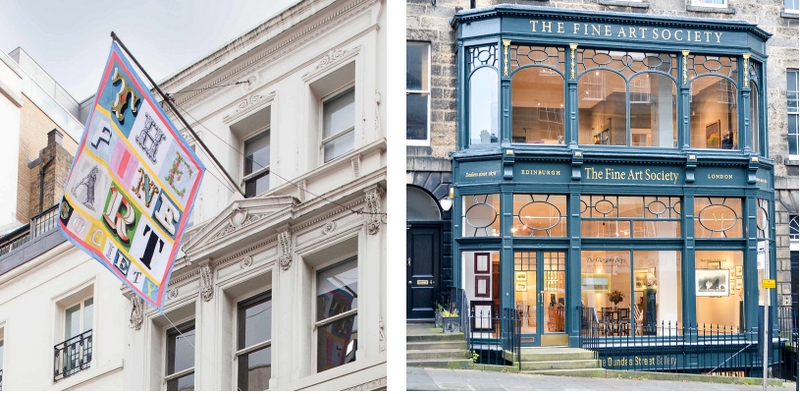An art gallery that pioneered the idea of solo exhibitions and staged the first “white cube” show is to sell more than 300 works to mark its relocation after 142 years on New Bond Street in London.
The Fine Art Society (FAS) left the five-storey Mayfair townhouse it had occupied since 1876 earlier this year, blaming rising rents and business rates. Its London branch (it also has a gallery in Edinburgh) is in temporary offices in Chelsea while it searches for a new permanent location.
The sale at Sotheby’s of works by artists from Whistler to Gluck to Peter Blake will be a celebration of its history, the gallery’s chair, Annamarie Phelps, said. “The artworks we have selected are those which are most representative of our time on New Bond Street, and illustrate some of our long-forgotten stories.
“The sale marks the end of one chapter and the beginning of an exciting new one.”
The gallery was the first in an area that became the centre of London’s art world, with Sotheby’s moving in directly opposite in 1917. It pioneered the one-artist exhibition with James McNeill Whistler, the flamboyant 19th-century American artist who settled in London, one of its most notable clients.

It was the FAS who came to the rescue when Whistler bankrupted himself pursuing a costly libel action against the critic John Ruskin. He had labelled the artist a “coxcomb” and was incredulous at Whistler asking for “two hundred guineas for flinging a pot of paint in the public’s face”.
The sensational court case has been described by the Guardian’s Jonathan Jones as the first truly modern row about modern art. Whistler won, but in name only. The jury awarded him a farthing in damages and the judge refused him costs.
The gallery helped Whistler out by paying for him to go to Venice to work on etchings; the sale will include 11 of his prints, including The Rialto (estimate £7,000-£9,000).
Whistler was a demanding artist, not least in his ideas about how his work should be exhibited. The tradition was for works to be hung busily in heavy gilt frames, literally on top of each other, but Whistler wanted them hung in a continuous line, as we are used to seeing today.
For his 1883 show of Venice etchings, Arrangement in White and Yellow, the gallery had yellow carpets, skirting boards and mouldings and the gallery attendants were, Whistler insisted, dressed in yellow. His prints were framed in white and hung against white felt – perhaps the first white-cube show.
Another artist with whom the gallery had a long association, and whose work will feature in the sale, is Gluck. Born to a wealthy family as Hannah Gluckstein, she openly and determinedly challenged the idea of a woman’s place. She was a pipe-smoking bohemian who dressed in men’s clothes and slept with women.
Gluck considered the FAS her second home and held solo shows there in 1926, 1932 and 1937, each of them critically acclaimed and attracting a good amount of public interest.
Her final show was held there in 1973 when she was well in to her 70s. After she suffered a heart attack, she contacted her lawyer to put a clause in her will that the show must proceed even if she died before its opening.

The Sotheby’s sale will include a print of a famous Howard Coster photograph of Gluck, dating from about 1932; and a painting, Flora’s Cloak, circa 1923, which is thought to be Gluck’s only nude. It has an estimate of £80,000-£120,000.
Other items in the sale, to be held in February, include custom-made office furniture and a print of the Fine Art Society flag, designed by Peter Blake in 2012, which hung outside the gallery.
David Macdonald, the Sotheby’s specialist in charge of the sale, said it was a privilege to be involved with a gallery with such a history. “I can imagine, in Howards End, the Schlegel sisters going off to look at drawings by Whistler. Or Charles Ryder in Brideshead Revisited showing his watercolour drawings there when he came back from his travels.”
guardian.co.uk © Guardian News & Media Limited 2010
Published via the Guardian News Feed plugin for WordPress.


